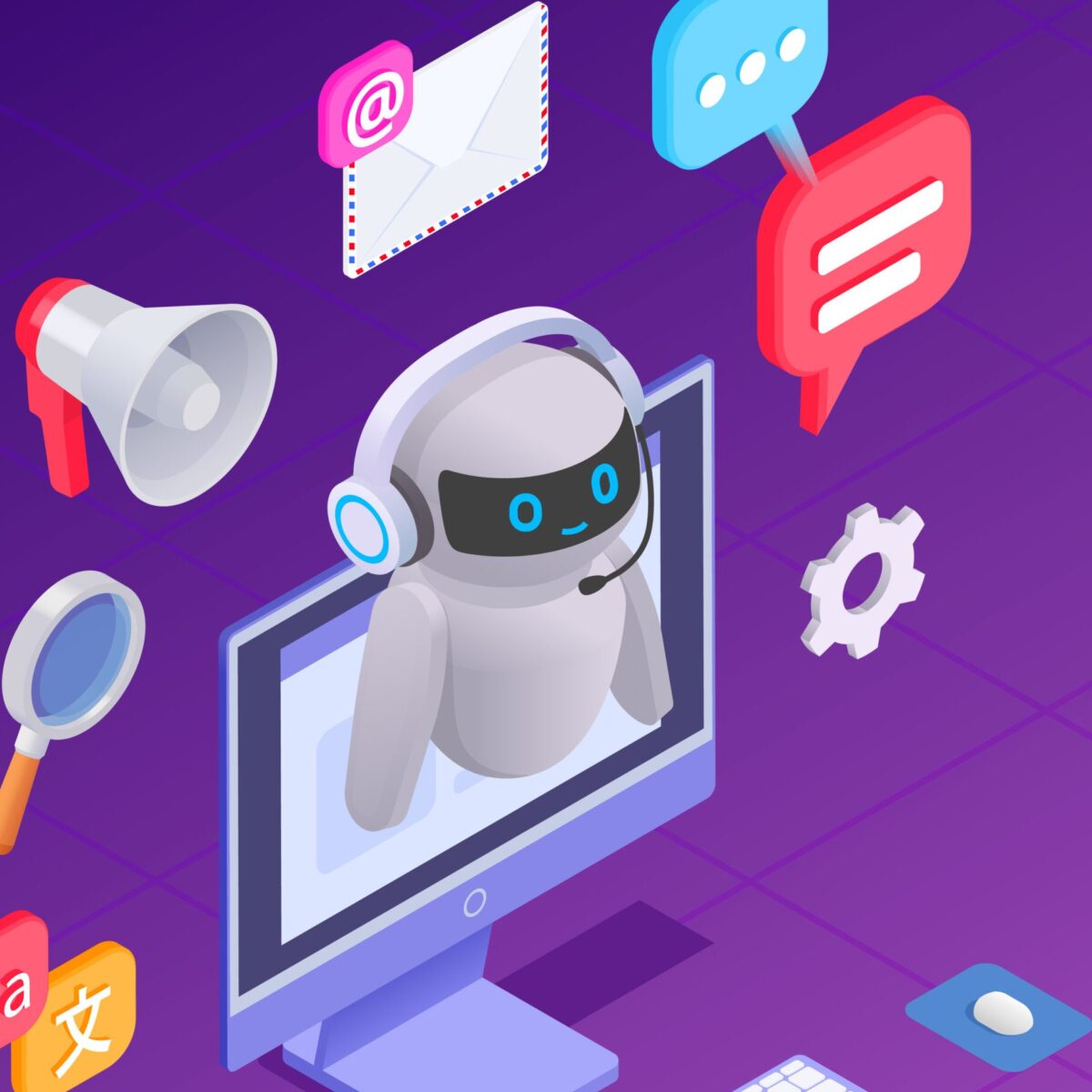117


Introduction
Artificial Intelligence (AI) has the revolutionized the landscape of marketing and advertising, ushering in a new era of data-driven, personalized and highly efficient strategies. As businesses strive to connect with their target audiences in an increasingly digital world, AI has emerged as a powerful ally, enabling them to glean invaluable insights, automate routine tasks, and deliver highly relevant content to consumers. From predictive analytics and chatbots to programmatic advertising and customer segmentation. AI’s impact on marketing and advertising is profound, refining the way brand engage with their customers and optimize their campaigns. In this dynamic and ever-evolving field AI’s potential is boundless, offering a glimpse into the future of marketing and advertising that is smarter, more strategic, and fundamentally more human-centric. Artificial Intelligence (AI) has emerged as a transformative force in the world of marketing and advertising. It has revolutionized how businesses engage with their customers, analyze data, and make informed decisions. In this article we will explore the multifaceted impact on AI on the marketing and advertising industry, uncovering the innovative ways in which AI is enhancing campaign effectiveness, customer experiences, and overall efficiency.
Data-Driven Marketing
AI is the game changer in the realm of data analytics. It enables marketers to harness the power of big data, offering unparalleled insights into consumer behaviour. With AI data-driven analysis, marketers can identify trends, patterns, and customer preferences that might otherwise remain hidden.
(a) Predictive Analytics: Predictive analysis is the practice of using data, statistical algorithms and machine learning techniques to forecast future outcomes based on historical information and patterns. It involves extracting information from existing data sets to determine patterns and anticipate future trends and behaviour. By applying predictive analytics, business can make informed decisions, identify potential opportunities, mitigate risks, and optimize strategies. It enables organizations to proactively respond to changing market conditions, customer preferences, and other variables, empowering them to take preemptive actions and make data driven decision that can significantly impact their success.
(b) Personalization: Personalization in AI Driven marketing and advertising involves leveraging technologies to tailor content and experience to the individual preferences, behaviour, and needs of consumers. AI algorithms analyze vast amount of data, including browsing history, purchase patterns, demographics, and real-time interactions, to create highly customized and relevant content. This customization extends across various touchpoints, such as personalized product recommendations, targeted advertisements, and individualized communication, aiming to enhance customer engagement and satisfaction.
(c) A/B Testing: A/B testing in the realm of AI-Driven marketing and advertising, is a method used to compare two or more versions of a particular marketing assets or strategy to determine which performs better. AI facilitates the process by efficiently analyzing the large volumes of data to identify subtle differences in user response to variations in elements like, ad copy design, layout, or even the timing of delivery. Through randomized experimentation, A/B testing allows marketers to make informed decisions about which versions resonates best with their audience, leading to data backed insights that optimize campaigns for higher engagement, click through rates, conversions, and overall marketing performance.

Chatbots and Customer Service
AI-Driven chatbots are transforming customer service by providing instant, round the clock support. These bots are equipped with the natural language processing (NLP) capabilities allowing them to understand and respond to customer inquiries in real-time.
(a) 24/7 Availability: The Chatbots represent a pivotal advancements in AI for marketing and advertising, offering 24/7 availability and instant support for customer service. These AI-Powered conversational agents simulates human-like interactions, providing real-time assistance to consumer at any hour.
(b) Cost Efficiency: Chatbots has emerged as a cost-effective solution in the realm of AI driven marketing and advertising, specifically in customer service. These AI-Powered assistance significantly reduce operational costs by handling a substantial volume of customer inquiries and support without the need for human intervention.
(c) Personalized Recommendations: Chatbots equipped with AI capabilities offer personalized recommendations as part of their customer service approach in marketing and advertising. These AI Driven system analyze user data, browser history, and interactions to understand individual preferences, enabling them to deliver tailored product or service recommendation.
Content Creation and Curation
AI has revolutionized content creation and curation in marketing and advertising by streamlining the process of generating, curating, and optimizing content.
(a) Automated Content Generation: Automation Content Generation, powered by AI, has become a game changer in marketing and advertising by streamlining the production of diverse and high quality content. AI-Driven tools use natural language processing and machine learning algorithms to create various forms of content, including article, blog posts, social media updates, product description and more.
(b) Content Curation: Content Curation is supported by AI technologies has redefined how marketing and advertising professional source, organize, and deliver relevant and engaging content to their audiences. AI-Powered curation tools scan through vast arrays information, articles, blogs, videos, social media posts, or more to identify and select the most suitable and valuable content pieces.
Programmatic Advertising

Programmatic advertising, a pivotal component in AI-Driven marketing and advertising, involves the automated buying and selling of digital ad space in real-time through sophisticated algorithms and AI technology. This automated system streamlines the ad placement process across various channels, such as websites, social media, and apps by targeting specific audiences based on their demographics, behaviours, and interests.
(a) Real-Time Bidding: Real-Time Bidding stand as a cornerstone within the realm of programmatic advertising in AI-Driven marketing and advertising strategies. RTB operates as an auction based system in which ad space is brought and solid in real time,using algorithms and AI to facilitate instantaneous bidding and ad placement. This technology allow advertisers to bid on digital ad inventory across various platforms, targeted specific audiences, based on their preferences, behaviours, and demographics.
(b) Targeted Audiences: Programmatic advertising in AI-driven ,marketing and advertising thrives on the concept of targeted audience segmentation. AI technologies enables the precise identification and categorization of audiences based on various parameters such as demographic, browsing behaviour, purchase history, and more. These algorithms analyze vast amount of data to create detailed profiles of potential customers. By understanding and segmenting the audience in such depth, marketers can personalize their advertising messages and strategically target specific audience segment with relevant content.
